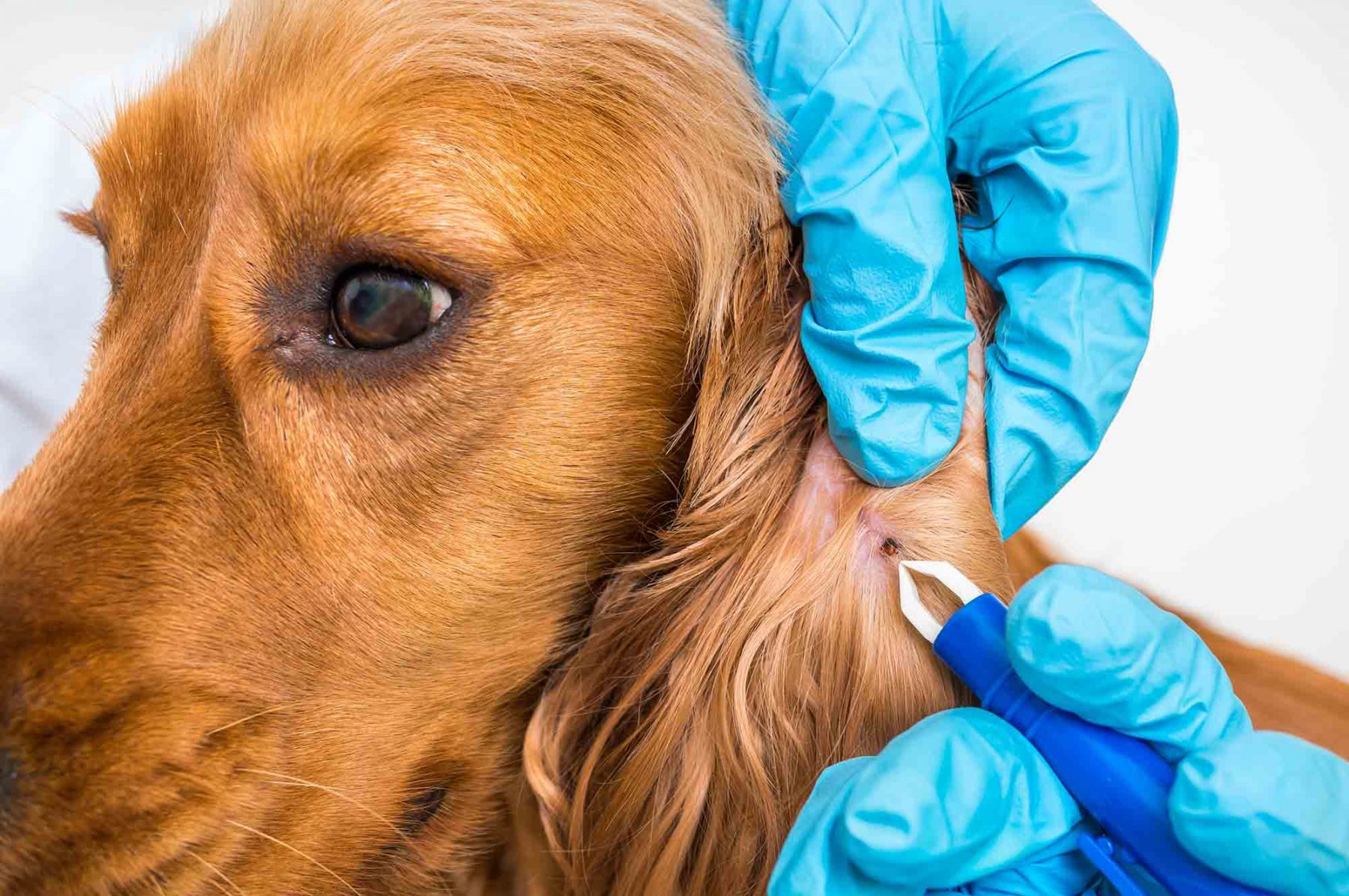
Most people have heard of Lyme Disease, and most people know that it is caused by ticks. But did you know that not only you, but your DOG can get Lyme? A fairly common canine disease, Lyme is caused by the bacterium Borrelia burgdorferi, via tick bites. Lyme Disease is very treatable in dogs, but since symptoms are delayed and can be minimal at first, it can progress into more serious problems.
Dogs get Lyme the same way that people do. From common ticks hiding in wooded areas, long grasses, shrubbery, marshes, sandy spots, and other wild areas. Ticks do not fly or jump, but rather wait on vegetation (like the tip of a blade of grass) for a human or animal to walk by. They can then crawl or fall onto the unsuspecting creature, where they will find a nice warm spot to feed on. Lyme will not spread dog to dog, or dog to person, but the same tick can move from one body and infect another.
The symptoms of Lyme Disease are sometimes hard to spot, or are so generalized that they could be a number of things. Signs include fever, loss of appetite, low energy, overall pain and discomfort, and even a limp or lameness on one side (often recurring). The dog may experience swelling in their joints, and seem stiff. Some describe their dog’s behavior as “walking on eggshells”, because it can be painful to move. Lyme is systemic, but will most likely cause problems in the joints and kidneys. Without being treated, it can progress to kidney failure, serious cardiovascular issues, and even neurological problems. If you experience any of these signs, contact your veterinarian, and they can perform testing to check for Lyme and also rule out any other health problems. There are two diagnostic tests for Lyme. The first, called a C6 test, will check for antibodies against the bacterium, which suggest an active infection. Antibodies can be spotted 3-6 weeks after the tick bite, but sometimes this is even before symptoms are visible. If the C6 is positive, then a Quant6 test with urinalysis will be used to confirm Lyme Disease and what course of treatment is needed. Lyme is treated with antibiotics (it’s a bacteria, remember), usually at least a four week course. Your vet may also prescribe treatment to alleviate symptoms that your dog is experiencing, such as joint pain or loss of appetite. When treated in a timely manner, most dogs can recover and live normally after getting Lyme Disease.
One of the most important factors in keeping your dog safe from Lyme Disease is prevention. Keep grasses mowed short, and stay on the trail in wooded areas. Talk to your vet about a monthly topical or edible flea/tick prevention. For some high-risk dogs (those more likely to be exposed or that are in high-risk areas) there is a Lyme vaccine, but it is not for every pet. Inspect your dog and yourself after walks through the woods or grassy areas. Check between your dog’s toes, under the collar, near the eyes and lips, inside the ears, and under the tail. Learn how to remove ticks the right way so you can quickly get them off your dog. If you find a tick moving, it has not fed yet, and can be removed easily. If it is not moving, it has attached and is or has fed. Firmly grasp the head of the tick (where it attaches to the dog/human) with fine tweezers and pull straight out. Do not twist during removal, as this can cause the tick to break apart, and some mouth pieces can remain inside the dog. Take care not to crush the tick, as the blood or contents could still infect you or your pet. Place the tick in rubbing alcohol or crush between two hard surfaces to kill it. If you find a tick that you are unsure or unable to remove (sometimes a two-person job, depending on the dog), contact your veterinarian.
Lyme Disease can be a very serious health condition when left untreated. Using prevention methods, checking your dog often for ticks, and knowing the symptoms of Lyme will help you to keep your dog safe. With early diagnosis and treatment, a dog with Lyme can recover and live a normal, healthy life.
Sources: The American Kennel Club (AKC), The American Veterinary Medical Association (AVMA), Merck Veterinary Manual, VCA Hospitals
